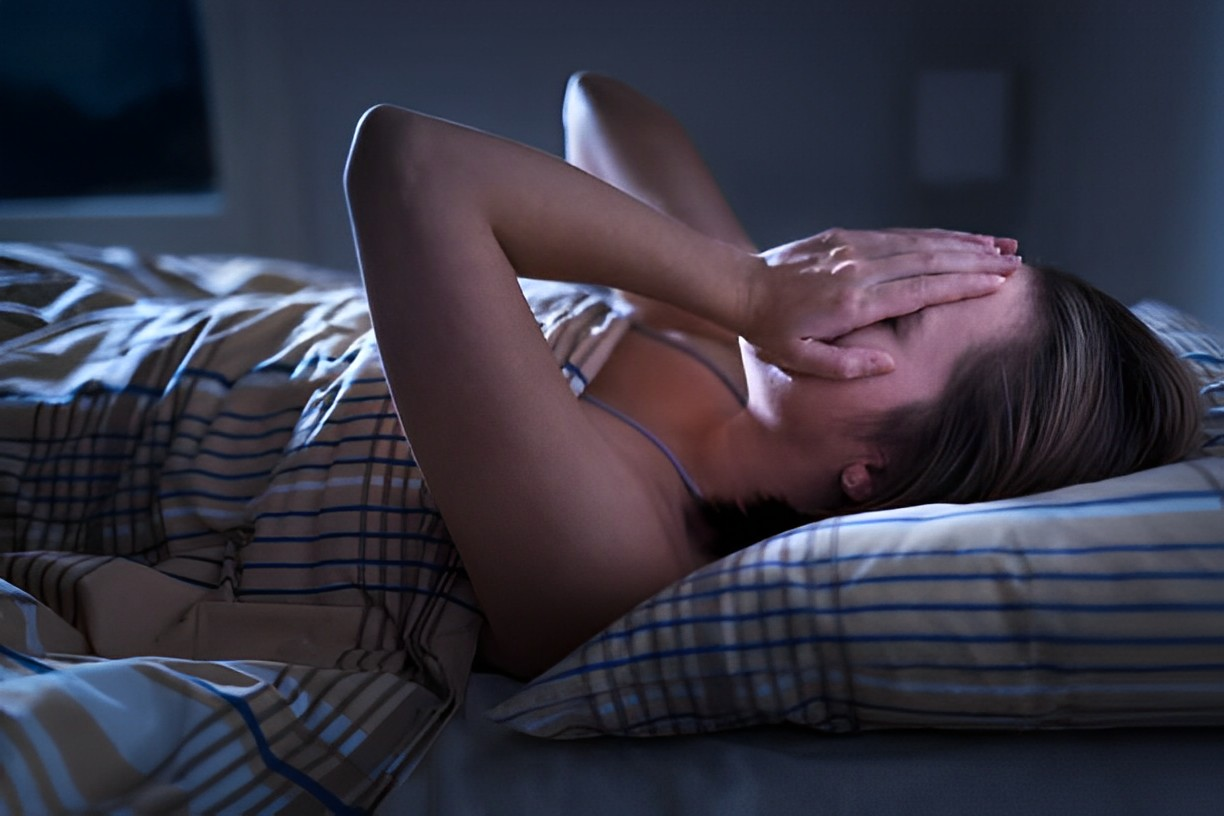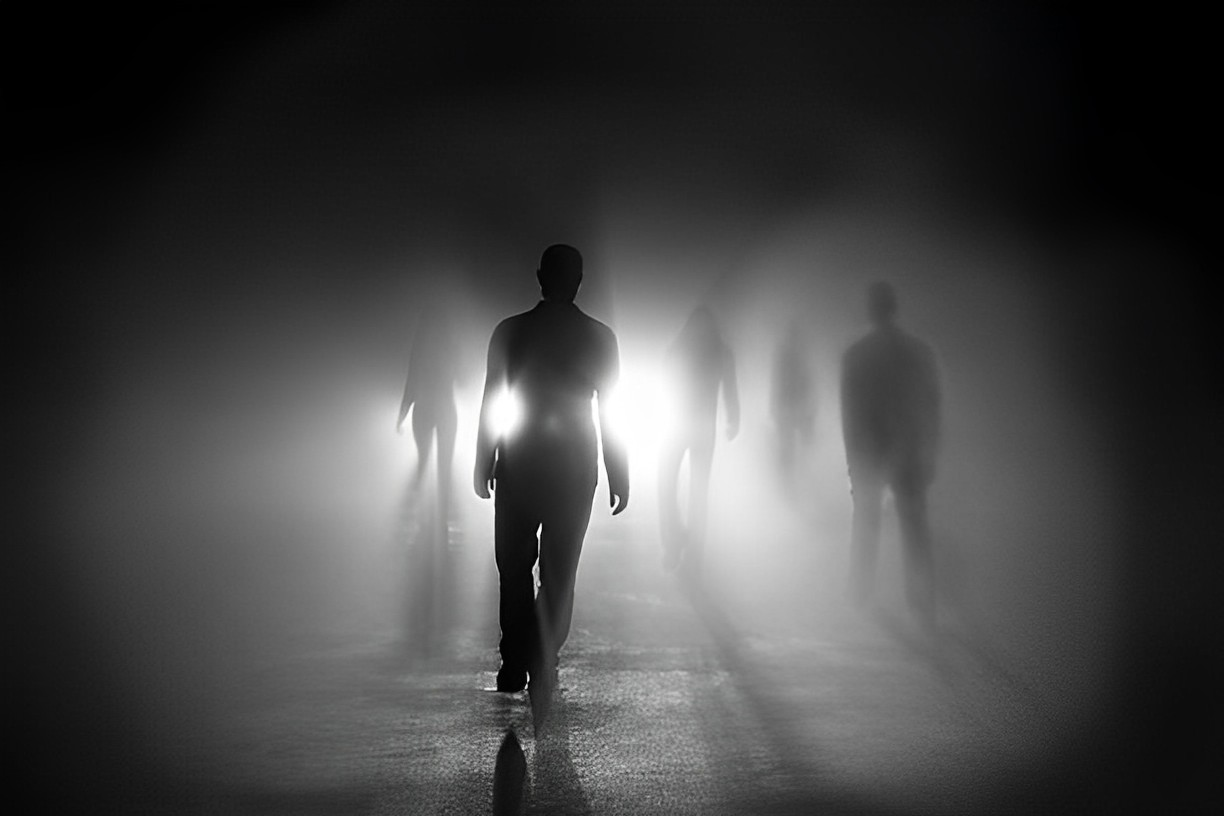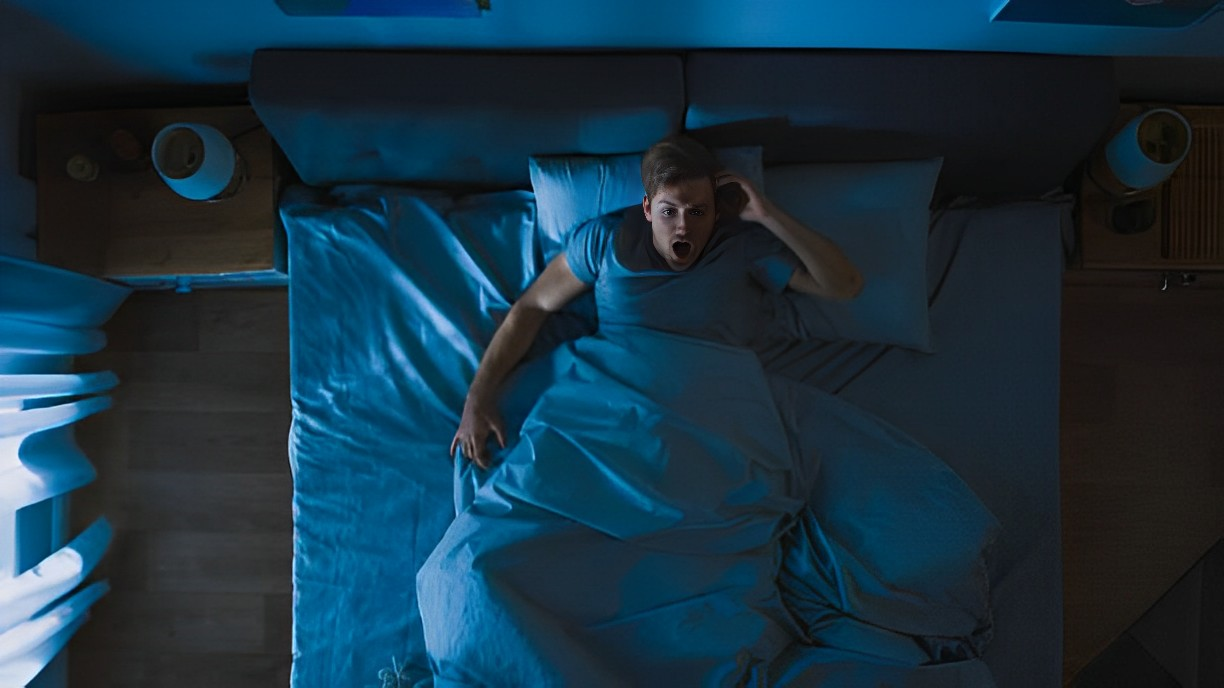When the barrier between sleep and alertness is blurred, ghost sleep develops. Throughout the (rapid eye movement) stage of sleep, your brain typically paralyzes a number of your muscles. This condition is known as “atonia.”
You may have sleep paralysis if atonia persists when you awaken from REM sleep or rapidly transition from alertness to REM sleep.
Sleep paralysis and hallucinations may co-occur. You may imagine that you see or hear something or that someone else is in the room.
It is a phenomenon, and you are not the only one to have encountered it. Continue reading to discover more about it and how to prevent it.
Understanding The Nightmare Hallucinations Of Sleep Paralysis Is Terrifying

Sleep paralysis is when a person is awake yet unable to move or have other floating sensations, and there is an inhibition of voluntary muscles. It is often accompanied by terrifying visual hallucinations of intruders or other paranormal activity in the brain.
The scary, almost nightmare-like feeling of detecting an invader yet being helpless to react is the outcome. Thankfully, this is only the result of a partially conscious human mind.
Sleep Paralysis: Separating Fact From Fiction
It is thought that between 1.7% and 40% of individuals suffer from sleep paralysis. However, not everyone has a demonic encounter. Not everyone has experience sleep paralysis in conjunction with hypnagogic or hypnopompic hallucinations.
How Do Individuals Characterize Ghost Sleep?

What is this “devil” that binds you to your body, preventing you from moving or screaming? Depending on who you ask.
Some see it as a faceless, formless entity attempting to suffocate them. Others have described it as a terrifying old witch with claws. Some individuals encounter what they think to be an extraterrestrial abduction after seeing an alien. And for others, the devils resemble a deceased relative. There are several cultural interpretations of sleep paralysis demons.
The Canadian Inuit attribute sleep paralysis to shamanistic spells. According to Japanese tradition, this ghost suffocates its adversaries as they sleep.
In Brazilian legend, the demon is known by the Portuguese name Pisadeira, which means “woman who steps.” She is an old woman with long fingernails who hides on rooftops at night and then walks on the chests of individuals who sleep on their stomachs.
Based on these stories, the greater a person’s fear of sleep paralysis, the more often they experience it and the more severe its consequences.
What was initially believed to be harmless, even imaginative, ideas have altered the sickness, inducing conditioned fear and influencing the content of hallucinations. Anxiety and stress predispose individuals to an attack. Thus those who fear it are often more susceptible to experiencing it.
How Often Does Sleep Paralysis Happen?
When a person is falling asleep or waking consciousness, sleep paralysis develops. During these changes, you may be unable to talk or move for a few seconds to many minutes.
Some individuals experience sweating or even a feeling of suffocation and inability to breathe. The transition into or out of profound Rapid Eye Movement (REM) sleep is essential to this sense of being immobilized. During REM sleep, the body is often immobilized, preventing the dreamer from doing the actions she sees herself undertaking. Occasionally, a person may awaken in this situation.
Why You May Be More Likely To See Ghosts If You Suffer From Sleep Paralysis

Due to snoring and untreated obstructive sleep apnea, you may be more likely to be woken from sleep or awake during the dream phase if you sleep on your back.
The following may also enhance the chance that you’ll experience sleep paralysis and hypnagogic or hypnopompic hallucinations:
- Heartburn
- Narcolepsy
- Post-Traumatic Stress Disorder (Ptsd)
- Alcohol
- Stress Or Anxiety
- Sleep Deprivation
What Can Be Done About Ghost Sleep?
Knowing that supernatural forces don’t exist and that bouts of sleep paralysis often last less than a minute, even if it seems like a lifetime. The following should help alleviate some of your anxiety about them.
Here are some other suggestions to lessen your likelihood of suffering these episodes:
Adopt A Healthy Sleeping Pattern
Aim for 6 to 8 hours of sleep every night, maintaining a regular bedtime and waking time.
Improve Your Sleep Hygiene
Take a page from the tale of Pisadeira and avoid resting on a full stomach. Avoid consuming coffee and alcohol before night. Doing something relaxing before bedtime might also aid in achieving a restful night’s sleep.
Avoid Sleeping On Your Back
Sleep paralysis is more likely to occur when you sleep on your back since you are more likely to be disturbed by snoring or sleep apnea. Thus, choose any other comfortable resting position. If you have the propensity to wind up on your back after falling asleep in a different posture, laying a cushion on each side might prevent you from completely turning over.
Treat All Underlying Ailments
Frequent sleep paralysis may be caused by stress, anxiety symptoms, and other mental health concerns. By treating the underlying problem, these occurrences may be prevented.
Consult Your Physician On The Drugs You Use
Drug side effects might cause sleep problems, including vivid dreams, nightmares, and sleep paralysis. See your healthcare professional if your episodes began or worsened after starting a new prescription or if you believe your medication may be to blame.
Exercise Regularly
Regular exercise may lower anxiety and tension and enhance sleep quality. Simply avoid exercising too close to bedtime.
Use Relaxation Methods
Relaxation practices such as deep breathing, meditation, and yoga help you de-stress before bed to keep tension and sleep monsters at bay.
Additionally, consider lucid dreaming. This often happens with sleep paralysis. A lucid dream entails one in which the individual is aware that they are dreaming.
During a lucid dream, you can influence the dream’s events. Most individuals have experienced lucid dreaming at some point. Other experiences happened, such as interesting out-of-body experience.
Hallucinations Of The Hypnagogic And Hypnopompic

The vivid dream-like experiences known as hypnagogic or hypnopompic hallucinations may seem genuine and are often terrifying. They may occur when you fall asleep (hypnagogic) or wake up (hypnopompic). They can be confused with nightmares.
During these visual hallucinations, you may see frightening persons or monsters in your vicinity or bed. Moreover, they are often accompanied by sleep paralysis.
These hallucinations may arise during the rapid eye movement phase of sleep if you are partially conscious. In this condition, you see the actual world while simultaneously dreaming – the perfect combination for perceiving nonexistent objects.
You may also see a distortion of something that is really present. For example, the pile of clothing on your chair may transform into a person watching you sleeping, or the light from your alarm clock could transform into a monster with crimson eyes.
The Diagnosis and Screening of Recurrent Isolated Sleep Paralysis
Sleep paralysis is mainly diagnosed by a clinical interview, excluding other probable sleep disorders that might explain the paralyzing sensations. Multiple tests are available to accurately identify or screen for recurrent isolated sleep paralysis (Munich Parasomnia Screening).
Several medical disorders, including narcolepsy and hypokalemia, are associated with sleep paralysis episodes. When episodes occur in the absence of these circumstances or drug usage, sleep paralysis is considered “isolated” (ISP).
When ISP episodes occur more often and produce clinically substantial anxiety or disturbance, the condition is called “recurrent isolated sleep paralysis” (RISP). Regardless of categorization, sleep paralysis episodes are typically brief (1–6 minutes); however, lengthier bouts have been observed.
Cataplexy caused by narcolepsy and real sleep paralysis is physically similar. Thus it may be challenging to discriminate between the two.
The simplest approach to distinguishing between the two is observing when assaults occur most often. Narcolepsy attacks are more prevalent while falling asleep, but ISP and RISP attacks are more prevalent when the individual awakens.
Diagnosis by distinction
- Exploding head syndrome (EHS) is a potentially terrifying parasomnia in which hallucinations are often briefer, always loud or jarring, and paralysis is not present.
- Nightmare disorder (ND), as well as REM-related parasomnia
- Sleep terrors (STs) are potentially terrifying parasomnia that is not REM-based. They are characterized by a loss of environmental awareness and cries.
- Nocturnal panic attacks (NPAs) are characterized by anxiety and intense discomfort but neither paralysis nor dream imagery.
- The symptoms of post-traumatic stress disorder (PTSD) often involve frightening images and anxiety but are not restricted to sleep-wake transitions.
The Bottom Line
Even if sleep paralysis demon is not accurate, the sensation of being stuck in your body with the sense or waking consciousness of one is nevertheless terrible.
If you’re struggling with frequent episodes of sleep paralysis or other sleep disorders, it’s time to take action. Consult your healthcare physician, and don’t hesitate to explore the wealth of resources and information available on the CPAPwater website.



